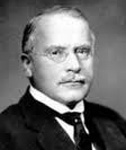 The Work of Carl Jung is a website devoted to introducing new generations to the remarkable work of Swiss psychiatrist, Carl Gustav Jung (1875-1961), through his important work, Modern Man in Search of a Soul. For decades, Modern Man in Search of a Soul has introduced millions of people to the foundational concepts of Jungian Analytical Psychology: the origins of neurosis, dream interpretation, therapist as patient, helping stuck patients, mythology and religion, active imagination, therapy foraging people, psychology and the afterlife, the differences between Jung and Freud, mysticism, the symbols of artists, individuation, the collective unconscious, the shadow self, spiritual problems of modern man, and archetypes.
The Work of Carl Jung is a website devoted to introducing new generations to the remarkable work of Swiss psychiatrist, Carl Gustav Jung (1875-1961), through his important work, Modern Man in Search of a Soul. For decades, Modern Man in Search of a Soul has introduced millions of people to the foundational concepts of Jungian Analytical Psychology: the origins of neurosis, dream interpretation, therapist as patient, helping stuck patients, mythology and religion, active imagination, therapy foraging people, psychology and the afterlife, the differences between Jung and Freud, mysticism, the symbols of artists, individuation, the collective unconscious, the shadow self, spiritual problems of modern man, and archetypes.
The Work of Carl Jung also provides important resources for Jungian education, including Jungian institutes and other Jungian organizations in North America. You’ll also find a comprehensive list of Jungian books to help expand your knowledge and understanding of one of the greatest thinkers of the twentieth century, Carl Jung.
The original publication of Modern Man in Search of a Soul was translated by W.S. Dell (1894-1975) and Cary F. Baynes (1883-1977). According to the translators, with one exception, all the essays which make up Modern Man in Search of a Soul have been delivered as lectures. The German texts of four of them have been brought out in separate publications and the others are to be found in a volume [Seelenprobleme der Gegenwart] together with several other essays which have already appeared in English.